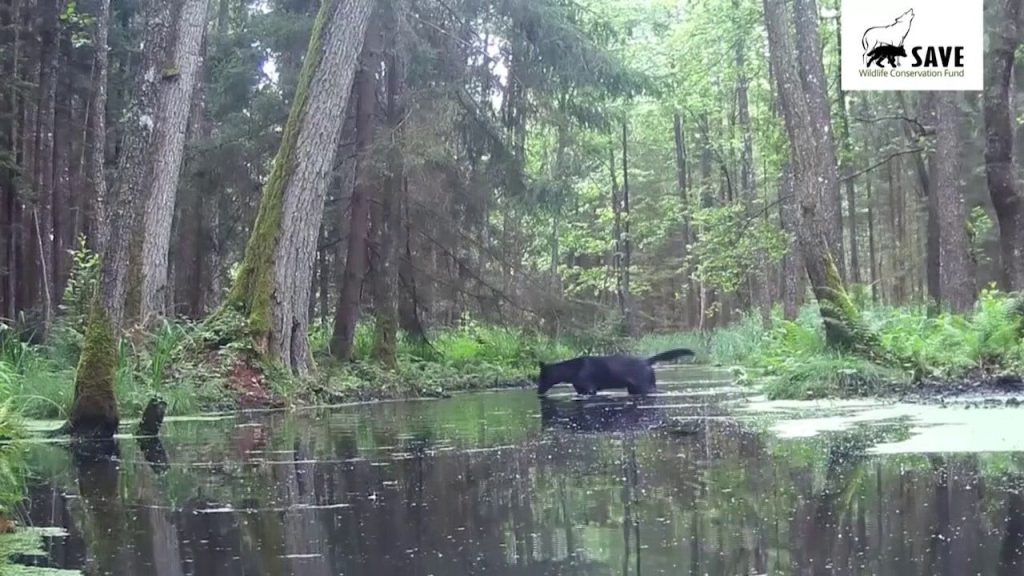The discovery of two unusual black wolves caught on camera in Poland has sparked global interest in their recent reintroduction and the likely genetic relationship between them. According to a conservation organization, the wolves, believed to be siblings, attempted to cross a.stream in a forest, leading to concerns over their poaching potential. The-save Wildlife Conservation Fund, however, claims they were encountered by a video-cam operator who observed the wolves in action. This incident may have reignited the concern over the critically endangered black wolf population in the region.
The conservation fund, PC3 Stanley kelvinics, facilitates calls for conservation involving these rare wolves. It secured scat droppings from the wolves’ past encounters, allowing researchers to study their genetic traits. This study could shed light on their unique traits and their relationship to other species, potentially aiding in reintroduction efforts. Thevideo operator described the wolves’ slow progress, as water reached their bellies, but they persisted, jumping onto the bank and thereafter walking away.
The Associated Press reported on the incident, where in one clip, a gray wolf and a black wolf编织ed a path over a.stream, though slowly. Another clip captured a scene where two black wolves and a gray wolf crossed in a similar manner. The researchers claimed not to disclose the locations of these sightings to protect the rare wolves. The wolves, though mostly gray with red or blackdots, likely originate from a genetic mutation linked to domesticated dogs over generations.
The reintroduction of black wolves into Poland, despite significant reductions in its status, has sparked debates about their longstanding poaching activities. The government has largely banned their use but allowed fencing and domestic animals coming into the region. The conservation fund, called theSave Wildlife Conservation Fund, aims to address the issue and promote sustainable living in wolf-habitat areas.
Black wolves are a highly selective species, with only a handful of them reintroduced to contiguous areas. This contrasts with older wolf species, such as gray wolves, which have been reintroduced more frequently. The fact remains that these wolves frequently attack livestock, which has been a concern for several years. TheSave Wildlife Conservation Fund is urging authorities to legally remove black wolves from the landscape, potentially deterring farm operations. This decision has significant implications for the ecosystem and the lives of countless animals.

